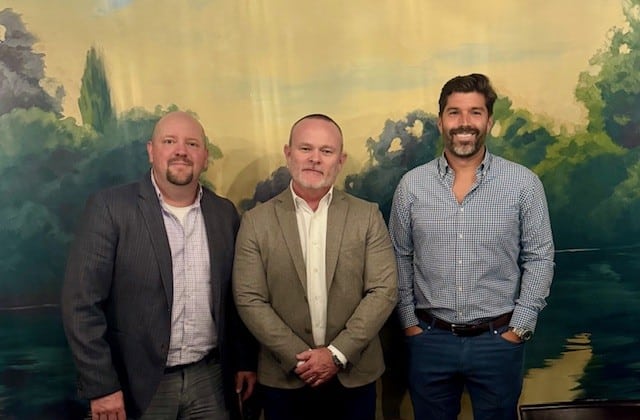In recent years, the fields of talent acquisition (TA), human resources (HR), and recruitment have faced major shifts that boil down to two key trends: the Great Resignation, and Quiet Quitting. These changes have underscored the pressing need for organizations to tackle burnout and foster healthier work environments to retain top talent and hire sustainably.
The Great Resignation: A wake-up call:
The Great Resignation, coined by Anthony Klotz, a professor of management at University College London, described the mass exodus of employees from their jobs post-pandemic. This phenomenon began in early 2021, following the initial stages of the COVID-19 pandemic, when resignation rates in the US surged to unprecedented levels. At the height of this trend, approximately 3% of employees were quitting their jobs in any given month.
The origins of the Great Resignation can be traced back to several factors accelerated by the pandemic. Initially, the pandemic caused a significant drop in resignation rates due to economic uncertainty and widespread job losses. However, as the economy started to recover, a backlog of resignations emerged. Employees who postponed quitting during the pandemic’s peak left their jobs once the immediate threat had subsided.
Burnout played a critical role in this shift. The pandemic blurred the lines between work and personal life, leading to increased stress and exhaustion. Employees began to reevaluate their relationships with work, seeking better work-life balance, flexibility, and job satisfaction. Remote work has made job changes easier by eliminating the need for relocation, further fueling the trend.
As the Great Resignation evolved, it became clear that employees were not just leaving their jobs, but also demanding more from their employers. They sought out workplaces that offered not only competitive compensation, but also a supportive culture, opportunities for growth, and presented a focus on well-being. This shift in employee expectations has forced businesses to rethink their approach to talent management and retention.
What’s interesting is that the Great Resignation has also been described as a “Great Reshuffle,” as many employees didn’t leave the workforce entirely but rather moved to different roles, or industries that better aligned with their values and needs. This trend highlighted the importance of that classic ‘cultural fit’ and job satisfaction in retaining top talent.
In response to the Great Resignation, businesses have needed to adapt quickly. Many have increased their focus on employee well-being, offering mental health resources, flexible work arrangements, and professional development opportunities. Additionally, some companies have turned to automation and AI to fill gaps that have been left by departing employees.
By the time we reached the middle of 2023, the quit rate had returned to pre-pandemic levels, suggesting a plateau in this trend. However, the impact continues to shape the future of work, further emphasizing the need for organizations to create healthier environments to attract and retain talent long-term.
Quiet Quitting: the silent protest
The Great Resignation saw active departures, while Quiet Quitting is a subtler, growing form of employee disengagement. Employees who “quiet quit” tend to do the bare minimum required and void extra tasks and responsibilities. This TikTok-driven trend highlights dissatisfaction with work culture and serves as a protest against burnout.
Quit Quitting first gained widespread attention in March of 2022, when Bryan Creely, a career coach and former corporate recruiter, used the term in a TikTok video. The concept quickly resonated with many, particularly among young workers, and the term soon went viral. Quiet Quitting means doing only the basic job requirements, not quitting, and rejecting extra work without proper recognition or compensation.
Quiet Quitting stems from a cultural shift prioritizing work-life balance and mental health. The pandemic played a significant role in this shift, as it increasingly blurred the lines between work and personal life. Many employees began to question the traditional work culture that often-glorified overworking and undervalued personal time.
This silent protest against traditional work culture sees employees fulfilling their job requirements without taking on additional tasks or responsibilities that aren’t explicitly part of their role. By setting firm boundaries around their work, such as refusing to check emails outside of work hours or take on extra projects without proper compensation, employees reclaim their time and energy, focusing on their well-being and personal fulfillment.
The rise of this trend has significant implications for employers, highlighting the need to address the underlying issues that lead to employee disengagement. Employers therefore must recognize the importance of fair compensation, growth opportunities, and a supportive work environment. By addressing these factors, companies will be able to reduce the likelihood of disengagement and foster a more engaged and motivated workforce. Moreover, it underscores the importances of mental health and well-being in the workplace, prompting employers to provide resources and support to manage stress and prevent burnout. This shift reflects changing attitudes towards work and emphasizes the need for a work environment that values and supports employees, ensuring they feel recognized, compensated, and motivated to contribute their best efforts.
The cost of burnout
Burnout is a critical factor driving both the effects of the Great Resignation and Quiet Quitting. Employees experiencing burnout are more likely to disengage, underperform, and eventually leave their jobs. The hidden costs of burnout include decreased productivity, higher absenteeism, and increased turnover. For HR, this means a costly, time-consuming cycle of hiring and training new employees.
Creating healthier work environments
To help combat these trends, organizations must prioritize creating healthier work environments. Promoting work-life balance is essential.
Encourage flexible working hours and remote work options to help employees balance personal and professional lives. Consider differing preferences to accommodate all needs. Flexibility not only helps in reducing stress but also increases job satisfaction and loyalty.
Creating a supportive culture is essential. When a workplace values employee well-being, recognizes achievements, and offers support during tough times, it can significantly boost morale. This means regularly acknowledging employee contributions, fostering a sense of belonging, and making sure everyone feels valued and heard.
Addressing burnout is crucial, and providing mental health resources is a big part of that. Organizations should offer access to counseling services, stress management programs, and other mental health resources. These can help employees manage stress and prevent burnout, leading to a more engaged and productive workforce.
Professional development is also important. Investing in employee growth through training and development programs can boost job satisfaction and loyalty. Employees are more likely to stay when they see a clear path for advancement and feel their skills are developed.
Fair compensation practices are fundamental. Ensuring employees are fairly compensated for their work, with competitive salaries, bonuses, and benefits, can prevent dissatisfaction and increase turnover. Fair compensation shows that the organization values its employees and can be a significant factor in retention.
Sustainable hiring practices
Sustainable hiring practices are essential to maintain a stable and engaged workforce. This involves not only attracting the top talent, but also retaining them. Focusing on cultural fit during the hiring process can lead to higher job satisfaction and retention. Hiring candidates who align with company values boosts their chances of thriving and staying long-term.
Enhancing onboarding processes also helps new hires to feel welcomed and integrated, reducing preemptive turnover through effective orientation, training, and regular check-ins. Offering clear career advancement opportunities keeps employees motivated and engaged, increasing retention by showing potential for growth within the business. Regularly assessing employee satisfaction through surveys and feedback sessions also ensures that organizations understand, and address employee needs promptly, leading to higher engagement and retention.
Looking ahead
We can look at the Great Resignation and Quiet Quitting as wake-up calls for organizations to fundamentally rethink their approach to employee well-being and engagement. These trends have revealed a workforce that is no longer willing to tolerate burnout, lack of recognition, and poor work-life balance. Instead, employees are demanding healthier work environments where they feel valued and supported.
For HR, TA, and recruitment leaders, this shift means more than just implementing new policies – but an overarching cultural transformation. Fostering a supportive, inclusive workplace culture is essential for retaining top talent and ensuring long-term success. This means addressing not only immediate concerns like burnout, but also creating a sustainable work environment where employees can thrive.
By taking these steps, organizations can navigate the current labor market’s challenges and position themselves as employers of choice. This is not just about surviving the present but about building a resilient and engaged workforce for the future. Successful companies invest in employee well-being, knowing a happy, healthy workforce drives sustainable growth and innovation.
In the end, the question isn’t just how to retain talent but how to create a workplace where people want to stay and develop. Envision a future where work provides purpose, fulfilment, and belonging, not just a paycheck. Are we ready to make that shift? I think the answer will define the future of work for years to come.





